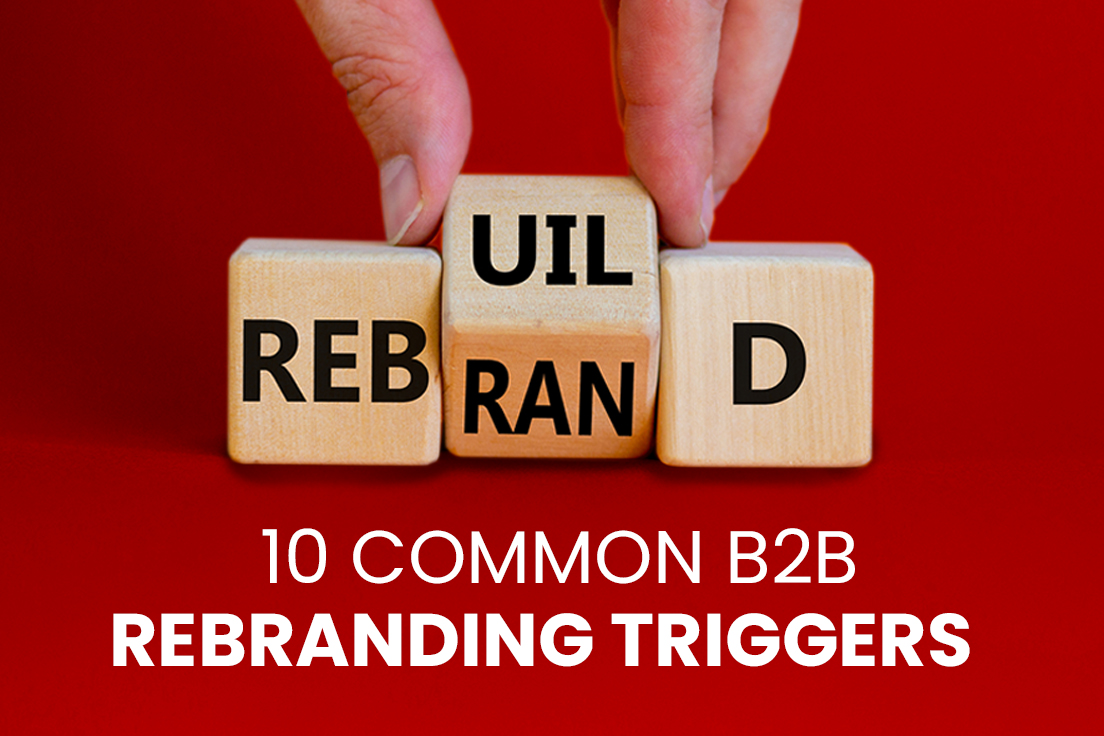We all know the significance of branding. Customers make a series of emotional judgements that shape their entire perception of a product or service. Brands must perpetually innovate and evolve. What’s not so easy is determining when the right time to rebrand is, and whether it’s necessary in the first place.
Here are 10 Common Rebranding Triggers for your B2B organization:
- Your brand is unclear or lacks emotional expression → A brand must be cohesive and consistent so that it can perpetually continue to portray the company’s values and skill-sets. It must also animate the customers and trigger an emotional connection. If your brand is lacking either of these attributes, it could be time for a rebrand.
- Your look and function don’t match; you changed your core function → “From a cosmetic point of view, when you look old and your looks don’t reflect what you are or what you deliver, it may be time to rebrand,” said Susan Betts, senior strategy director for New York based Future Brand North America. “It is important to match your [look] to who you really are.” An outdated brand can look unprofessional, despite it’s probable years of experience. If it’s been years since you’ve thought of rebranding, now is probably a good time. Or, maybe you no longer do what you did ten years ago. Your brand must reflect that change.
- You need to avoid commoditization → Buyers recognize little in the way of differentiation between your products/services and others in your industry. Your product is sold on the basis of either price or convenience, not brand. Rebranding has the ability to inspire brand loyalty and avoid commoditization.
- You are experiencing pressure from competitors → A major loss of sales to competitors is more than enough reason to take action. Rebranding will elevate your company and positioning in the market.
- You’re looking to engage in a new market or audience → Could a rebrand help you reconnect with your target audience, or help you reach a new demographic? As we know, trends are ever-changing; especially with people. As audiences grow older, brands either have to change with them or begin to target a younger demographic.
- You are undergoing a management change or a merger → With new management, there will be new direction. Utilizing rebranding can assist them in laying their own claim on the business. On the other hand, perhaps you have merged with another company and need to create a cohesive company identity in response.
- Your brand is simply lacking in awareness → Rebranding your company could also help you gain more attention in the market. The process creates more website and social media presence and also leads to a general increase in business.
- Your company or target audience has had a shift in philosophy → Maybe you want to represent the values of your target audience and show empathy for the issues they care about. Or maybe you’ve outgrown your mission, and while the original purpose may no longer fit, you have a good feel for where you are going. Either way, this is a good time for a rebrand.
- Your company is coming up on a key milestone or is changing generational hands → Perhaps it’s your company’s 50th Birthday or you’re celebrating a key point in its history. A rebrand could help promote this celebration and demonstrate the longevity of the brand to customers. Or maybe management is handing off leadership responsibility to the next generation in the family. This is the perfect time to celebrate change within the company as it ushers in a new era.
- You are recovering from a negative image → As often as there are high points in a company’s history, there are also low ones. A fresh facelift can be just what the company needs to restart.
If you do decide that rebranding is what’s needed, make sure you have professional help to ensure that it’s done right. Give your customers fair warning. Ease them into it and acquaint them with your new image. Be sure to keep all customer touch points in mind throughout the process. Internally, make certain your employees find the rebrand just as credible and believable as you do. More than a simple name or logo change, rebranding often requires a change in culture and even the company’s business model. While challenging, the benefits of rebranding are considerable.







